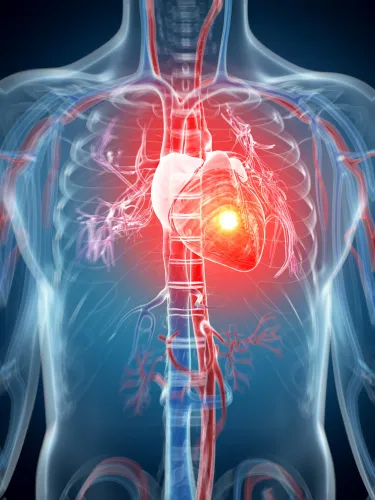Cardiology Coding Alert
CERT Report Discovers 7.7 Percent Improper Payment Rate for Cardiology
Insufficient documentation one of biggest errors found in latest report by CMS. As you are busy submitting multiple claims every day in your cardiology practice, you have to be diligent on each and every claim, or errors could creep in. In fact, cardiology practices logged a 7.7 percent error rate, according to the latest report from CMS. Among the biggest culprits contributing to this error rate was insufficient documentation, which came in at 45 percent and incorrect coding, which came in at 48 percent. Background: CMS recently released the “2019 Medicare Fee-for-Service Supplemental Improper Payment Data” report as part of its Comprehensive Error Rate Testing (CERT) program. The CERT report breaks down the biggest errors among Medicare claims and covers the causes of the improperly paid charges. Overall, the government found a 7.25 percent improper payment rate among Part A and B claims during 2019, which represented a total of $28.9 billion in improper payments. Catch Cardiology Services With Highest Improper Payments You will find the improper payment rates and amounts by provider type and type of error in Table I1 and J1. Here, CMS reports that cardiology visits logged a 7.7 percent improper payment rate, totaling over $356 million in projected improper payments. The insufficient documentation rate is 45 percent, while the incorrect coding rate is 48 percent. The CERT report also highlights cardiac electrophysiology and vascular surgery. Cardiac electrophysiology logged a 12.8 percent improper payment rate, with projected improper payments of $61 million. Insufficient documentation came in at a 91.3 percent error rate for this specialty. And, vascular surgery had an improper payment rate of 10.5 percent, with projected improper payments of $45 million. Insufficient documentation had a 64 percent error rate, and incorrect coding had a 35.9 percent error rate for this subspecialty. Break this down: Take a look at some of cardiology-specific services from Table G1: “Improper Payment Rate by Service Types, Part B”: See Medical Necessity, Incorrect Coding, and Downcoding Errors Several cardiology-related services came in on the top “20 Types of Services With Medical Necessity Errors” Table F3, and that means you should pay extra attention to these claims. Cardiac arrhythmia and conduction disorders logged in with projected improper payments of $77 million. Chest pain came in with projected improper payments of $73 million. And, heart failure and shock had projected improper payments of $64 million. Some cardiology services also made the “Top 20 Types of Services with Incorrect Coding Errors” list found in Table F4. Heart failure and shock came in with projected improper payments of $61 million. Also, “acute myocardial infarction, discharged alive” logged improper payments of $23 million. Finally, cardiology services also appeared on the “Top 20 Types of Services with Downcoding Errors” list found on Table F5. Heart failure and shock had projected improper payments of $49 million. “Acute myocardial infarction, discharged alive” logged improper payments of $22 million. And, other circulatory system diagnoses came in with projected improper payments of $13 million. “CERT is an excellent program that provides extremely helpful information for physicians,” says Christina Neighbors, MA, CPC, CCC, Coding Quality Auditor for Conifer Health Solutions, Coding Quality & Education Department, and member of AAPC’s Certified Cardiology Coder steering committee. “It’s really important for physicians to keep an eye out because there is a lot of overcharging and unnecessary billing for services that lack the proper medical necessity.” Look at These Issues With E/M Services CERT also looked at the evaluation and management (E/M) services that had the most projected improper payments, as found in Table K1. Take a look at the top three on the list: Bottom line: CERT found “incorrect coding” as the top error among the E/M codes, resulting in the most improper payments. To avoid making incorrect coding mistakes in your practice, always make sure that you read the medical documentation carefully, understand and follow your CPT® and ICD-10 guidelines, and learn your payers’ specific rules. Particularly given the documentation requirements for E/M services and the additional complexity that electronic health records (EHRs) have brought, it is more important than ever to be familiar with reporting requirements and confirm that the documentation supports the level of service being claimed, says Gregory Przybylski, MD at the JFK Medical Center in Edison, New Jersey. Resource: To read the full CERT document, visit https://www.cms.gov/files/document/2019-medicare-fee-service-supplemental-improper-payment-data.pdf.
Related Articles
Cardiology Coding Alert
- CERT:
CERT Report Discovers 7.7 Percent Improper Payment Rate for Cardiology
Insufficient documentation one of biggest errors found in latest report by CMS. As you are [...] - Cardiac Monitoring, Part 3:
Get Your Most Burning Cardiac Event Monitor Questions Answered
Only report 93268 if the cardiologist reports the entire cardiac event monitoring service. In the [...] - E/M 2021:
Focus on Approaching 2021 Updates for New Patient Office E/M Codes
Catch these code descriptor changes for 99202-99205. Evaluation and management (E/M) new patient office codes [...] - You Be the Coder:
Learn Congenital TTE Rules
Question: Could you help me understand the rules for reporting codes TTE codes 93303 and [...] - Reader Question:
Take These Steps to Protect ePHI
Question: My practice plans to switch over to exclusively using electronic faxes, but before we [...] - Reader Question:
Demystify Nonselective Catheterization
Question: The cardiologist introduced a catheter into the patient’s common femoral artery and advanced it [...]




